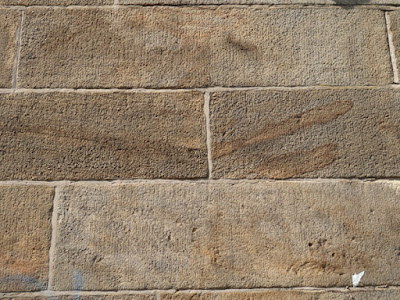My 3.5 kilometre walk around Wadsley Park Village, which ended back at the Middlewood Park and Ride, had only taken an hour and a half and, with it only being 12:30 in the afternoon, I caught the Supertram to the Infirmary Road stop.
My plan was to take some more photographs for the British Listed Buildings website around Upperthorpe, Broomhill and Broomhall and then walk back into Sheffield city centre but, having taken advantage of the Tesco Superstore to buy a few essential items, I started by taking a look at the buildings that formed part of the Royal Infirmary.
The Historic England description of the infirmary, now Heritage House, states that it was completed in 1797 to a design by John Rawsthorne and this is marked quite clearly on the 1855 Ordnance Survey map, along with a lodge at the north-east corner of the site.
A few years previously, I had taken a few photographs of the lodge on one of my occasional visits to this part of Sheffield, which I thought might be built with Chatsworth Grit; however, since reading the short article on the Sheffield Area Geology Trust (SAGT) website, which records investigations into the provenance of the sandstone used to build the Royal Infirmary – it seems very likely that this is Loxley Edge Rock from quarries along Loxley Edge.
Since starting my investigations of the Victorian Sheffield Board Schools back in February 2021, I have been to very many parts of Sheffield to photograph various listed buildings for the British Listed Buildings website – including Malin Bridge and Wadsley, where the local Loxley Edge Rock has obviously been used for many of these.
I have briefly visited Loxley Edge on three occasions and have collected various samples of this rock with my Estwing hammer and, although it seems to lack the small pebbles that are very common in the Chatsworth Grit, it can be a very coarse gritstone.
Looking along the south-eastern elevation of the block, although not see in the best light, the sandstone would be described as wild, with orange and sometimes rusty brown iron blotches and Liesegang rings contrasting strongly with the generally drab grey colour of the body of the stone.
Access and views are quite limited on this elevation and I took only a few record photographs, before moving round to the front elevation, where the same colour variation could be quite clearly seen on an unlit surface.
It is only 4.5 km as the crow flies from the old quarries mentioned at Loxley Edge by SAGT, with a direct route down Dykes Hall Road and through Hillsborough and, from what I have seen of the Loxley Edge Rock - in outcrops and in vernacular architecture and boundary walls - I have no reason to think that these are not the quarry source.
The Heritage Park is a private residential development so I just took a few photos of the principal elevations, without getting close to look at the stone. When the sun came out, the grey nature of the sandstone is not so obvious, but again becomes very noticeable when in the shade.
I had a quick walk around the exterior of the Roundhouse (1884), the former Outpatients' department, which is by John Dodsley Webster. Looking at the walling stone, it is obvious that it is not the Loxley Edge Rock, with its relatively uniform colour, thin courses and planar bedding. I immediately thought that this must be Crawshaw Sandstone, with Derbyshire or Huddersfield stone used for the dressings.
The last remaining part of the Royal Infirmary is Centenary House (1897), which is also by John Dodsley Webster and was formerly the Nurses' home. I only took a few general photos from a distance, but it again is built with a uniformly buff bedded sandstone that looks very similar to the Crawshaw Sandstone that has been used for the Sheffield Board Schools – again with Derbyshire or Huddersfield stone dressings.













No comments:
Post a Comment